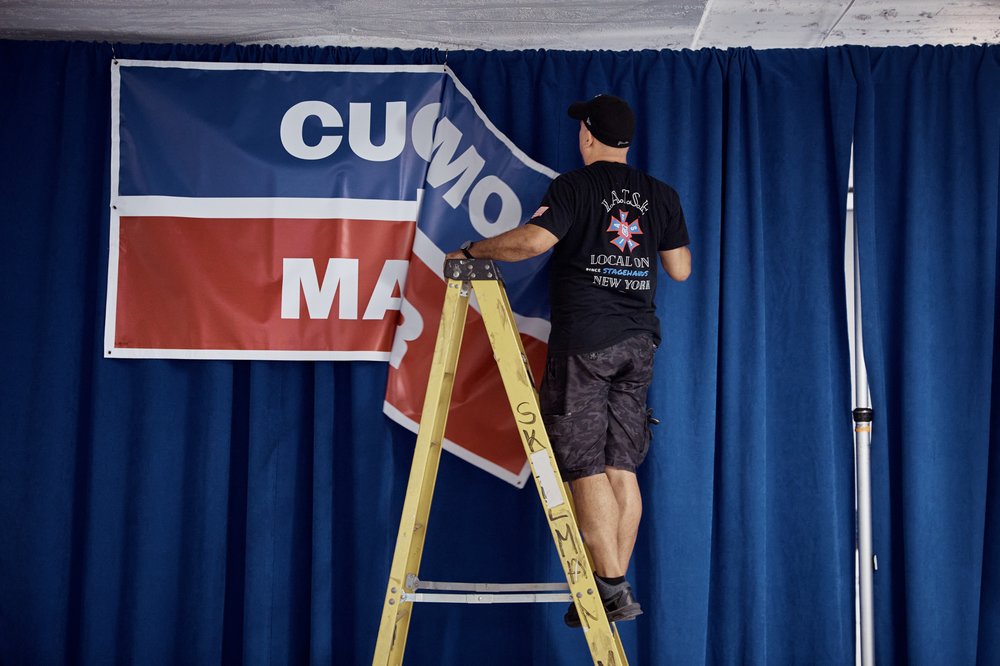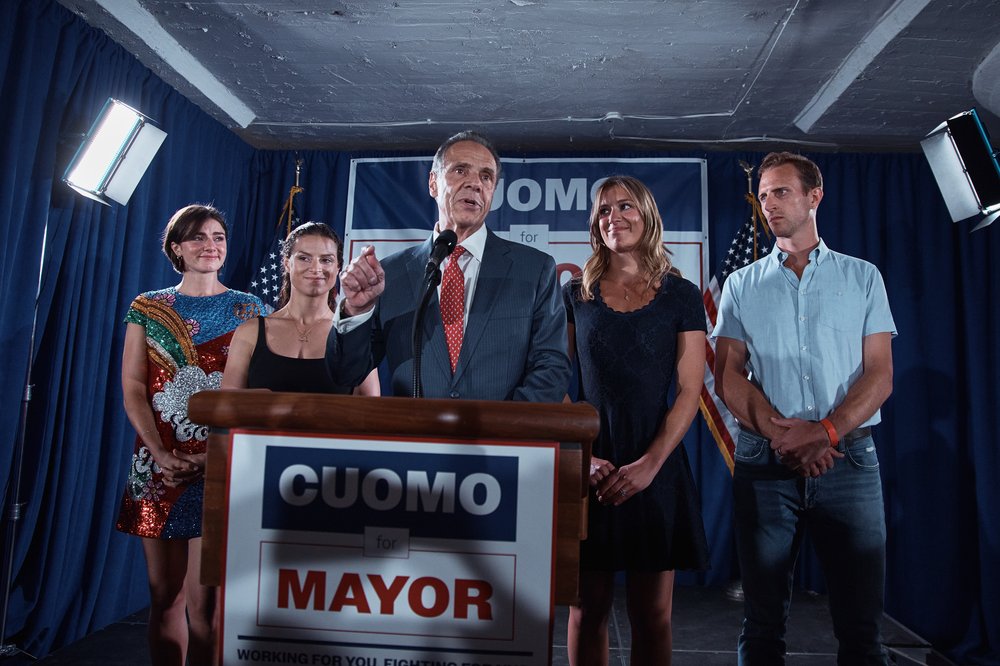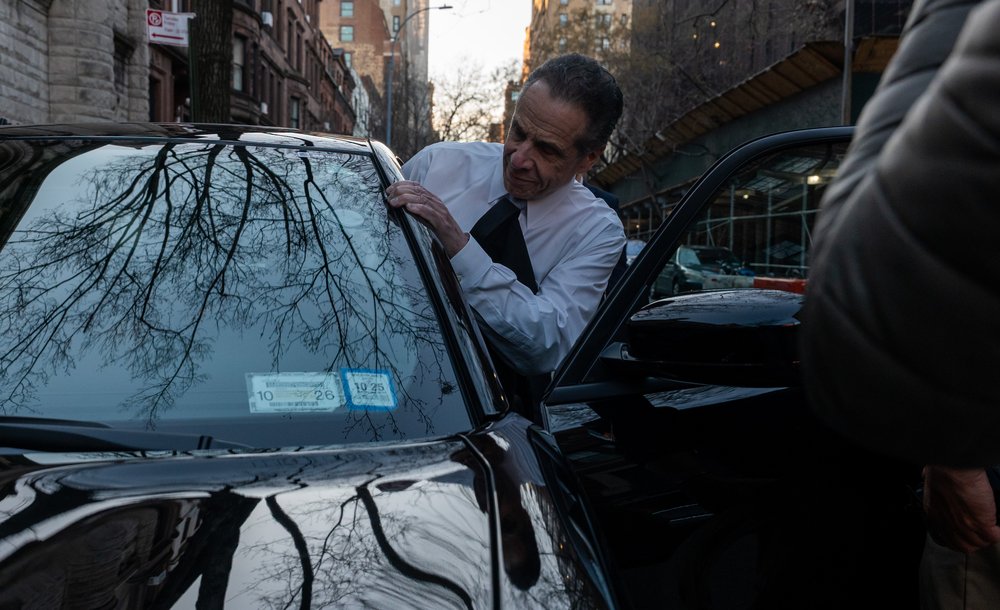Andrew Cuomo to stay on ballot, but can he overcome his campaign’s missteps?
June 27, 2025, 9:54 a.m.
The former governor will remain the candidate of the "Fight and Deliver" Party. But his primary campaign left many supporters disappointed.

The Friday before Primary Day, top officials at the super PAC boosting Andrew Cuomo were guardedly optimistic about his chances – despite some troubling signs in the early voting tallies.
Addressing donors in a virtual meeting, Fix the City Chair Steve Cohen cited major newspaper editorials that argued Zohran Mamdani wasn’t fit for the mayoralty, according to two people who attended but requested anonymity because the virtual meeting was private.
John Cordo, a lobbyist whose clients include 1199 SEIU, answered a query about get-out-the-vote work by describing the efforts planned by the many unions who had endorsed the former governor, the people said. Then pollster Mark Penn, whose early clients included former Mayor Ed Koch, previewed a poll showing Cuomo still held a double-digit lead.
Even amid the sunny presentation, some of the donors exchanged worried texts, attendees told Gothamist. Where was the concrete plan to turn out voters for Cuomo? And Penn’s subdued tone belied the message of reassurance he was supposedly delivering.
“If the job was to get people fired up, it got people worried,” one of the donors said.

A week later, the political scion who was once talked up as a presidential candidate is back in the electoral wilderness.
Cuomo conceded the Democratic primary to Mamdani on Tuesday. The former governor decided Friday to keep his name on the general election ballot as the candidate of the “Fight and Deliver” party, a campaign official said.
Whether or not he continues to actively campaign through November remains an open question. But the 40-minute Fix the City confab showcased many of the shortcomings of Cuomo’s comeback bid for mayor, which was designed to resurrect his career after he resigned from office in 2021.
With early polls showing a comfortable lead, the former governor skipped many candidate forums and tightly managed his public appearances, often ignoring questions from the press. He relied on old hands, some of whom don’t live in the five boroughs. The campaign banked on support from institutions – particularly labor unions – that it hoped would translate into necessary votes.
It was a strategy built on a sense of inevitability. Cuomo has near-universal name recognition from his 15 years as a statewide elected official. He started working in New York politics five decades ago as an aide to his father Mario Cuomo’s unsuccessful bids for mayor and eventual election as governor.
“Very often people who's been in office for a while, there's two types of approaches. There's a top-down approach, and then you have the bottom-up approach,” said Assemblymember Rodneyse Bichotte Hermelyn, who had backed Cuomo as chair of the Brooklyn Democratic Party. “That's something that you have to constantly do to keep in time with the momentum. Things have changed.”
Bill Ackman, a hedge fund manager who contributed $500,000 of the $24 million raised by Fix the City, said in a Thursday X post that Cuomo “sat back and did not run a real campaign, relying on name recognition, early favorable polling and keeping a low profile to make it through.”
Cuomo campaign spokesperson Rich Azzopardi said Mamdani’s campaign “managed to expand the electorate in such a way that no turnout model or poll was able to capture, while the rest of the field collapsed.”
“We are incredibly proud of the campaign we ran and the broad coalition that we built,” he said.
Fix the City spokesperson Liz Benjamin said the group was disappointed by the results but “proud to have built in eight weeks a formidable independent expenditure committee doing things no [super PAC] has ever done before.”
Even after early voting began, Fix the City was trying to hire people to work as Election Day canvassers, according to a political operative who spoke with the group that week. Benjamin said that the late outreach occurred because support increased late in the campaign, allowing it to “enhance our targeted field operation.”
The former governor worked hand-in-glove with unions including the Hotel Trades Council and New York City District Council of Carpenters, whose Lower Manhattan headquarters was often a venue for Cuomo campaign events.
Hank Sheinkopf, a political consultant whose clients include a Teamsters local that backed Cuomo, said institutions don’t have the power they once did.
“The people who voted don’t give a s— about institutions,” Sheinkopf said. “Talk to President Kamala Harris about it. They don’t matter in the way they used to, and institutions need to figure out how they’ll become relevant again.”
Austin Shafran, a spokesperson for the influential HTC, said unions can only do so much if the campaigns don't step up.
"The best unions provide high-quality, supplemental support that help push good campaigns over the finish line. But core field infrastructure for citywide campaigns needs to be owned by campaigns themselves.”
Azzopardi said the Cuomo campaign executed its turnout plan and hit its targets. Cuomo won areas like Canarsie and Co-Op City, where many union members live. Cuomo finished the primary with more than 360,000 first-place votes.
But the campaign didn’t anticipate the extent to which Mamdani would expand the electorate. The share of first-time voters who cast ballots during the nine days of early voting increased to nearly 25% from around 3% in 2021, a Gothamist analysis found.
The two-term assemblymember from Astoria also benefited from increased turnout in South Asian and Muslim enclaves like northern Bay Ridge, Jackson Heights and Jamaica Hills, according to an analysis by political consultant Amit Singh Bagga.
“This is a huge generational shift in the Democratic Party,” said J.C. Polanco, a professor at the University of Mount Saint Vincent. “Cuomo campaigned as if it was 1999 and that was not going to fly.”
The contrast bordered on cartoonish as the race wrapped up amid a heat wave.
Cuomo, 67, closed by announcing the endorsement of former President Bill Clinton, whom Cuomo served as Housing and Urban Development secretary when Mamdani was in elementary school. The former president lives near the Westchester County house of Cuomo’s ex-girlfriend, Sandra Lee, where Cuomo often stayed while he was governor. Cuomo also announced an endorsement from influential South Carolina Rep. James Clyburn, whose support was seen as key to President Joe Biden’s election win in 2020.
Mamdani, 33, appeared on “The Late Show with Stephen Colbert” and recorded a video for the Pop Crave social media channel. He walked the length of Manhattan, finishing at the Battery.
On Primary Day, Mamdani held a press conference at sunrise and then greeted voters in Jackson Heights, the Bronx and Upper West Side. Cuomo cast his ballot in Midtown – voting only for himself on his ranked choice ballot – and then didn’t have another public appearance until he conceded.

Mamdani was passed over by most unions and instead relied on an army of volunteers, some of whom were organized by the Democratic Socialists of America. The campaign said it had 50,000 people who knocked on more than 1 million doors.
Cuomo pointed to his long record in government, including upgrades to LaGuardia Airport and Pennsylvania Station. He again proposed raising the minimum wage, as he did in 2016, and leaned on past disaster relief for Puerto Rico and the legalization of same-sex marriage.
Opponents picked at the negative parts of his tenure, including his micromanagement during the COVID-19 pandemic and a controversial Health Department directive which said nursing homes couldn’t reject COVID-positive patients. The governor and his aides have said the directive was in line with federal guidance and didn’t lead to more nursing home deaths.
Cuomo resigned as governor in 2021 after a report released by Attorney General Letitia James found he sexually harassed about a dozen women, including state employees. The former governor at the time acknowledged and apologized for some of his behavior, but he now denies harassing anyone. Some of the women who publicly accused Cuomo said he created a toxic work environment. Azzopardi described the governor’s Albany office as a hard-charging environment that achieved results.
It all coalesced into a simple message: “Don’t Rank Evil Andrew for Mayor,” or DREAM. The slogan became a catchphrase repeated by candidates, the Working Families Party and everyday people who scrawled it around the city.
The ex-governor is also famously vindictive, according to state Sen. Gustavo Rivera, a Democrat from the Bronx. He said many elected officials and institutions either sat out the race or backed Cuomo out of a sense of fear.
“I was surrounded by people who were either shook to death that he might actually come back, so they figured that it was in their best interest to try to lick his boots early, or people who sadly and unfortunately have always lacked integrity,” Rivera said.
The result, he said, was a lack of enthusiasm even among supporters. Azzopardi said, “You can quote me shrugging. That guy has had Cuomo derangement syndrome for a decade.”
Some people who had backed Cuomo have now endorsed Mamdani, including Bichotte Hermelyn. Others, like Ackman, said they find the prospect of a Mamdani mayoralty deplorable. Ackman said he would raise funds for an independent candidate.
Cuomo will remain on the November ballot on the “Fight and Deliver” line. The general election will also include Mayor Eric Adams, who skipped the primary because of now-dropped federal corruption charges. Republicans again nominated talk-show host Curtis Sliwa, and attorney Jim Walden is mounting an independent bid.
In an interview with WCBS on Wednesday, Cuomo said he didn’t believe Adams could be re-elected. Cuomo said he didn’t like the choices in the field and was still evaluating whether he would continue to campaign.
“I’m getting deluged with phone calls from people who are concerned,” he said. “I am very worried about New York City, and that’s why I ran in the first place. … Let’s take it one step at a time.”
How voters in Trump districts helped Mamdani win the Democratic primary